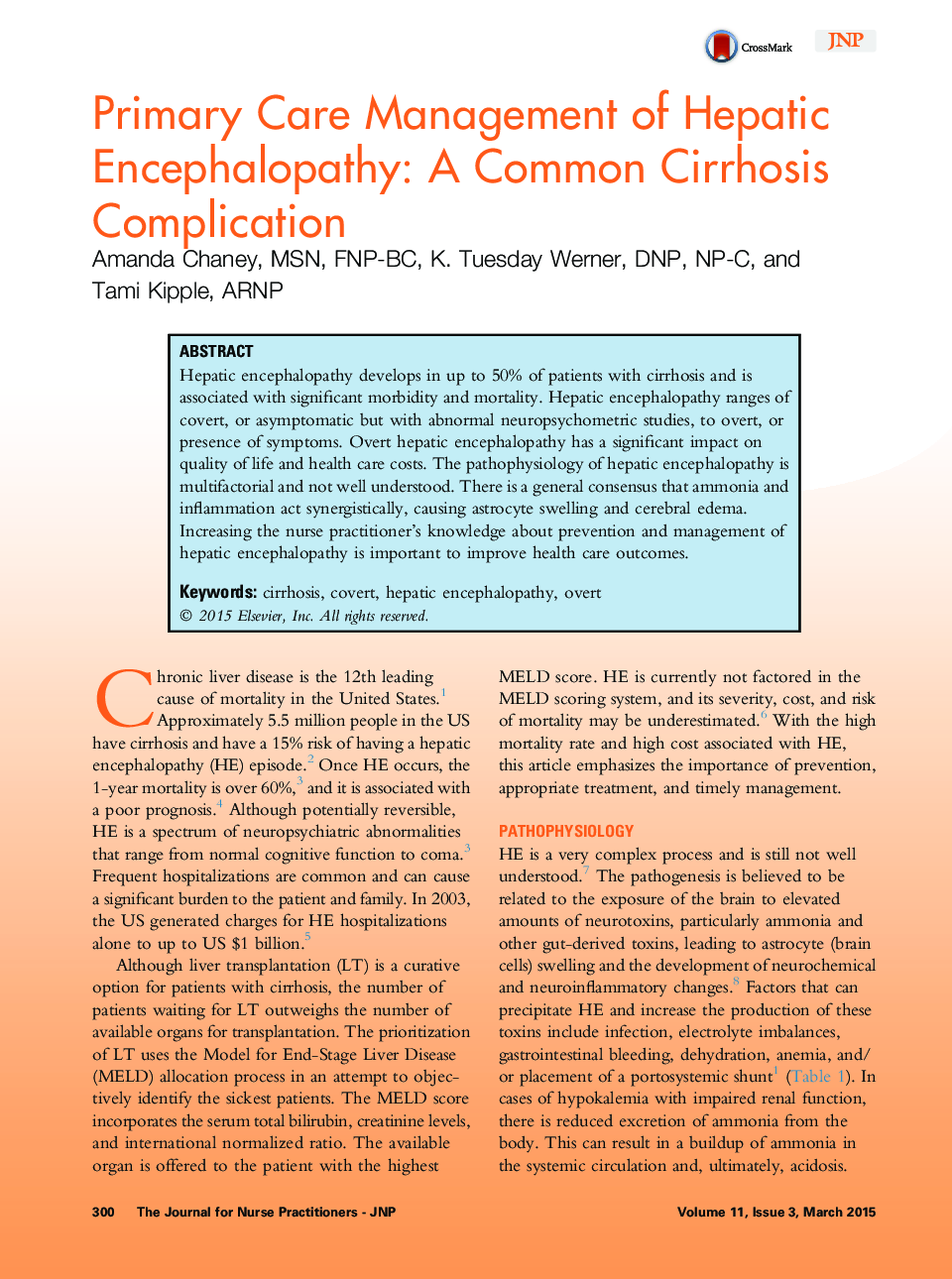| Article ID | Journal | Published Year | Pages | File Type |
|---|---|---|---|---|
| 2660400 | The Journal for Nurse Practitioners | 2015 | 7 Pages |
•Hepatic encephalopathy is one of the most common complications of cirrhosis•Nurse practitioners are frequently providing care to patients with cirrhosis•Hepatic encephalopathy can range from mild confusion to a comatose state•Hepatic encephalopathy is associated with a significant morbidity and mortality•To improve outcomes, increasing knowledge about hepatic encephalopathy is important
Hepatic encephalopathy develops in up to 50% of patients with cirrhosis and is associated with significant morbidity and mortality. Hepatic encephalopathy ranges of covert, or asymptomatic but with abnormal neuropsychometric studies, to overt, or presence of symptoms. Overt hepatic encephalopathy has a significant impact on quality of life and health care costs. The pathophysiology of hepatic encephalopathy is multifactorial and not well understood. There is a general consensus that ammonia and inflammation act synergistically, causing astrocyte swelling and cerebral edema. Increasing the nurse practitioner’s knowledge about prevention and management of hepatic encephalopathy is important to improve health care outcomes.
